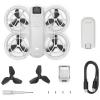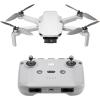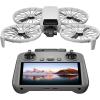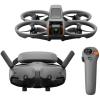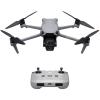Thinking about getting a drone and flying it in New Zealand? Or maybe you’ve already got one and you want to know what you can and can’t do with your new toy. Whether you’re a beginner or you just need a refresher, we’ve got you covered.
In this guide, we’ll cover rules and regulations, helpful tips and advice, and recommendations for the best drones available. Here’s what you need to know when flying a drone in NZ.
Rules You Need to Know When Flying a Drone in NZ
In New Zealand, drones are legally considered aircraft, so you’re expected to follow some basic aviation rules. As of the time of writing, you don’t need a license, and you don’t have to register your drone, just yet.
However, it looks like that might be changing in the near future. There are plans to bring in registration for drones over 250g and introduce a basic safety test. You can keep an eye on caa.govt.nz for updates.
For most people, those who’d consider themselves enthusiasts and hobbyists, you’ll need to follow the Part 101 rules from the Civil Aviation Authority (CAA). Essentially, these are the rules for everyday drone flying.
Part 101 is a long document that you can access here. Below are the rules that you need to know.
1. Part 101 Aviation Rules quick version:
- Keep your drone in sight at all times.
- Stay under 120 metres in height.
- Only fly during the day.
- Stay at least 4 km away from airports or heliports.
- Don’t fly over people or private property without permission (more below)
- Check if you're in controlled or restricted airspace – if you are, you need approval before flying. (Use the Airshare app, see below)
- Your drone must weigh 25 kg or less.
If you’re doing something more advanced, you’ll need extra approval. This falls under Part 102, which is more for businesses or specialist operators. You can access that here.
2. Download AirShare
Before you fly your drone in New Zealand, it’s a very good idea to download the AirShare app or visit airshare.co.nz. In fact, it’s probably essential that you do this.
AirShare is the official NZ drone airspace map that shows:
- No-fly zones (like airports or restricted areas)
- Controlled airspace
- Conservation land
- Temporary restrictions
- Where you’re good to fly
You can also log your flight and even request permission if you need to fly near an airport.
3. Flying a drone Around People, Property, and Nature in New Zealand
In New Zealand, there are a number of rules you need to follow regarding flying a drone around people, property and nature. Here’s what you need to know:
Get consent
- You must get permission before flying over people or private land.
- That includes beaches, backyards, farms, and public events.
- Don't assume it’s fine just because it's outside; if someone’s underneath your drone, you need their okay.
Avoid conservation land
- DOC-managed land (national parks, reserves) is off-limits unless you’ve got a permit.
- Most recreational flying isn’t approved.
- Drones can disturb birds, marine life, and culturally sensitive sites (like wāhi tapu).
Don’t disturb wildlife
- Stay well away from nesting birds, seals, dolphins, and whales.
- The legal minimum for marine mammals is 150m.
Essentially, if you’re in doubt about whether you can fly a drone somewhere, it’s probably best not to do it.
4. What Happens If You Break the Rules?
It’s not just a slap on the wrist.
- Fines can be up to $5,000.
- Flying in national parks without a permit: $200-$800.
- You can also have your drone confiscated or face prosecution if you fly dangerously.


NZ Drone Buying Guide
Once you know the rules, the next step is picking the right drone for you. And with so many options out there, it can be a bit tricky figuring out which one is the best fit.
We’ve compiled a list of things you should consider when choosing a drone that’s right for you. And we’ve recommended some of our favourite options as well.
Features to look out for
If you're not sure how to compare drones, here are a few key things worth keeping in mind:
- Battery life: Most drones get around 25 - 45 minutes per battery. If you want longer flight sessions, look for drones with extended battery options or grab a combo pack with extras.
- Weight: Drones under 250 grams are more convenient, they’re usually exempt from registration, easier to travel with, and tend to cause less hassle if something goes wrong. Heavier drones often have better performance, but they may come with stricter flying rules in the future.
- Camera quality: Look at resolution (4K is standard now), but also check frame rates (e.g. 60fps for smoother motion) and stabilisation. Vertical shooting is handy for social media, while dual cameras give you more creative control.
- Obstacle avoidance: Entry-level drones don’t always have sensors to detect trees, walls, or power lines. If you’re flying in complex environments, look for drones with obstacle detection in multiple directions.
- Flight features: Things like subject tracking, automatic return-to-home, and pre-programmed cinematic shots can massively improve your footage – and make your life easier as a pilot.
Standard vs Pro Models
A lot of popular drones now come in multiple versions. You might see a standard model, a "Pro" version, or even bundles with upgraded controllers. Here’s what to look out for:
- Standard versions usually come with a basic controller and a single battery. Great for casual users or first-timers.
- Pro versions may include better camera sensors, more obstacle sensors, multiple camera lenses, or added features like enhanced tracking and low-light performance.
- Upgraded controllers – Some drones can be purchased with a controller that has a built-in screen (so you don’t have to plug in your phone), which is a really nice quality-of-life upgrade.
What About FPV Drones?
FPV (First Person View) drones are a different style of flying altogether. Instead of watching your drone from the ground, you wear goggles and see what the drone sees in real-time.
FPV drones are faster, more agile, and often used for racing, freestyle flying, or capturing fast-paced action shots. They’re incredibly fun, but there’s a learning curve – crashes are more common, and you’ll want to practise in open areas first.
If you’re curious about drone flying as a sport or want immersive footage, FPV might be your thing.


Popular Drones to Consider
DJI Neo: Hands-Free Flying
Designed to be as hands-off as possible, this drone uses onboard sensors and AI to follow you around. No piloting necessary.
It’s compact and doesn’t require any flying experience, making it perfect for people who want amazing footage with minimal effort.
DJI Mini 4K: Best for Beginners
The DJI Mini 4K is a lightweight, easy-to-use drone that’s perfect if you’re new to flying. It keeps things simple: easy controls, a basic controller, and solid 4K video quality.
It weighs under 250 grams, which means it’s likely to remain exempt from registration under any future rule changes.
While it doesn’t have all the fancy features of higher-end drones, it’s a great option for learning the ropes.
DJI Flip: Fun, sporty flying
The DJI Flip is small and fast, with a design that leans more towards sporty flying than capturing videos.
It can perform quick flips and rolls, making it feel more like a trick drone or something halfway between traditional drones and FPV flying.
DJI Mini 4 Pro: Best all-rounder
The DJI Mini 4 Pro is where compact meets powerful. Still under 250 grams, it offers high-end features usually reserved for larger drones: 4K/60fps video, vertical shooting, full obstacle avoidance, excellent low-light performance, and intelligent tracking.
This drone is ideal for creators who want professional-looking footage in a lightweight, travel-friendly package.
It's also available in different versions, one with a basic controller, and another with a smart controller that has a built-in screen.
DJI Avata FPV 2: Immersive FPV flying
This is a beginner-friendly FPV drone that pairs with DJI Goggles, letting you see from the drone’s perspective in real-time.
It’s fast, agile, and stable thanks to built-in propeller guards and flight assistance features.
You can start in beginner mode and gradually unlock full manual control as your skills grow. It’s the perfect entry point into FPV without building your own racing rig. If your focus is speed, adrenaline, and immersive flying, this is the one to go for.
DJI Air 3S: Best for Enthusiasts
The DJI Air 3S is a serious all-rounder. It has dual cameras, a wide-angle and a telephoto, the flight time is longer than most other drones, and it handles strong wind conditions really well.
It also features advanced subject tracking, obstacle detection on all sides, and top-tier video quality.
This one’s for people who want to go beyond the basics.
It’s larger than the Mini series, but still very manageable and packed with professional-grade features.


